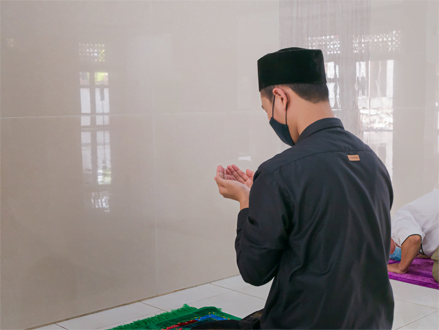
Sunnis and Shias are two of the sects in Islam. They have different beliefs, practices, codes of dressing, etc. We shall discuss with you the differences between Sunni and Shia in this article.
Both Sunni and Shia Muslims belong to the two main sects of Islam. The two sects have the same holy book, but they differ in their beliefs about who can be a prophet.
Sunni Muslims believe that Muhammad was the last prophet and they follow his teachings as part of their religion. They also believe that all other prophets after him were not true prophets because they did not receive any revelations or divine messages from God directly.
Shia Muslims believe that Ali ibn Abi Talib was chosen by God as his last messenger on earth through whom he gave divine messages to humanity through Mohammed’s descendants (persecuted by non-Muslims because they didn’t accept this belief).
Now, let’s start to look at the differences between Sunni and Shia.
Differences between Sunni and Shia
Shias believe that the Prophet Mohammad’s family is the best example of Islam and they should be followed. They also believe in the concept of Imamah, which means divine leadership of the Prophet’s family. They have some differences with Sunni Muslims when it comes to who is eligible for being a leader after him (the successor).
#1. Belief
Sunni Muslims follow the Holy Quran and Prophet’s teachings in letter and spirit, whereas Shias practice faith in Quran only but not in the teachings of the Prophet Muhammad. The differences between Sunnis and Shias are significant enough to warrant a separate article on this topic.
#2. Code of dressing
Shia Moslems wear white clothes and cover their head, while Sunni Muslims also do.
- Shias wear black clothes, while Sunnis don’t.
- Shias wear green clothes, while Sunnis don’t.
- Shias also like yellow and red as well as blue but these aren’t necessarily exclusive to Shia Islam as it’s all about how you feel on any given day in terms of what color scheme works best for you at the time.*
#3. Method of prayer
- Shia Muslims pray 5 times a day.
- Sunnis pray 5 times a day.
Both Sunni and Shia Muslims face the same direction when praying, but there are differences in how they do it: Shias pray in congregation, while Sunnis prefer to pray alone or with one other person (or group).
Both groups will sit on the floor facing toward Mecca (the holiest city in Islam), but if you observe closely you’ll notice that Shiites tend to place their right hand over their chest and lift it up at every pause during prayer; this is called bowing down.
#4. Occasional activities
Shia Muslims observe ‘Muharram’ with great fervor, and Sunnis observe it in a quiet manner by day with prayers and majlis (religious meetings).
The word ‘Muharram’ means “the first month” or “month of mourning”. It is a period of two weeks during which Shia Muslims celebrate Ashura, commemorating the martyrdom of Imam Hussein ibn Ali at Karbala on 10th October 680 CE.
Sunni Muslims follow the Holy Quran and Prophet’s teachings in letter and spirit, whereas Shias practice faith in Quran only but not in the teachings of the Prophet Muhammad. Sunni Muslims accept other faiths as well as their own, whereas Shia Muslims consider themselves a branch of Islam that has been corrupted by innovations and misinterpretation of the holy book.
Sunnis also respect other religions more than Shias do; they do not consider them to be heretical or idolatrous (i.e., worshipping false gods).
Sunnis believe that anyone who follows the Quran can be the leader of Islam, whereas Shias believe only those from the family of Prophet Mohammad should become caliph or leader.
Sunnis believe that anyone who follows the Quran can be the leader of Islam, whereas Shias believe only those from the family of Prophet Mohammad should become caliph or leader.
Sunnis are also more likely to accept democracy than Shias because they believe it is a better way to run a country.
The Sunni Muslims are more tolerant of other religions than the Shias.
The Sunni Muslims are more tolerant of other religions than the Shias.
Shia is less tolerant of other religions than Sunnis, and they don’t allow the followers of other faiths to live in their country.
The Prophet Muhammad (peace be upon him) did not forbid his followers from visiting shrines and mosques built by non-Muslims; he even encouraged them to do so.
The Shia Muslims consider Hazrat Ali (son-in-law of Muhammad) as their first Imam and as Allah’s chosen leader. On the other hand, Sunnis do not accept this belief. Even though Hazrat Ali was an important figure in Islamic history, he was neither a prophet nor an infallible imam according to Sunni beliefs.
In addition to their different beliefs on choosing leaders and prophets, there are many differences between Sunni and Shia Muslims on how they pray: Shias prefer standing while Sunnis adopt a sitting position during prayer; Shias wear black clothes while sunnies wear white ones; Shias use two hands when making ablution (washing); etc.
The Sunnis consider Jihad as one of the pillars of Islam whereas Shias don’t grant such significance to it. The Sunnis believe that Jihad is one of the pillars of Islam and it should be practiced by everyone who wants to become a Muslim, but they don’t believe that anyone can ever be an extremist or extremist in any way whatsoever.
On the other hand, Shia Muslims consider Jihad as something very important in their religion but they don’t think that it’s necessary for every person who wants to become a Muslim (or even if you’re already one).
Contrary to this, Shias believe that Qur’an is distorted and no longer exists in its original form since it has been translated into several languages including Persian and Urdu.
They also believe that the Sunnis have distorted the Holy Book by changing some words or removing some verses from their respective copies so as to support their own version of Islam.
While Shias celebrate ‘Muharram’ with great fervor, Sunnis observe it in a quiet manner by day with prayers and majlis (religious meetings).
They also observe this day as Ashura on the 10th Muharram and mark his martyrdom by fasting, weeping, and beating themselves with chains in remembrance of his sacrifice at Karbala where he was killed by Ummayads along with his family members including his son Imam Zainul Abidin who was just two years old at that time.
Muharram is a month of mourning for Shiites. The word ‘Muharram’ means ‘celebration of martyrdom’ and refers to the commemoration of Imam Hussain’s death.
Between Sunni and Shia which one is the best
Both Sunni and Shia are good. They have different ideas about what is right, but that doesn’t make one better than the other. Both Sunnis and Shias believe in an Islamic state that strives for justice, equality, and freedom of religion. The differences between these two religions are mainly in how they interpret the Qur’an or their understanding of who Muhammad was (see below).
Conclusion
As you see, there are many differences between Sunni and Shia Muslims. Both groups believe in the same religion but they have different interpretations of it.
The Sunnis follow the Holy Quran while Shias follow Prophet Mohammad’s teachings only. The Sunnis consider Jihad as one of the pillars of Islam whereas Shias don’t grant such significance to it.
On the other hand, Shias celebrate ‘Muharram’ with great fervor whereas Sunnis observe it in a quiet manner by day with prayers and majlis (religious meetings).
I hope this article has helped you know the differences between Sunni and Shia step by step. Please share it with your friends and remember to subscribe to our newsletter or like my Facebook page for more important updates.






